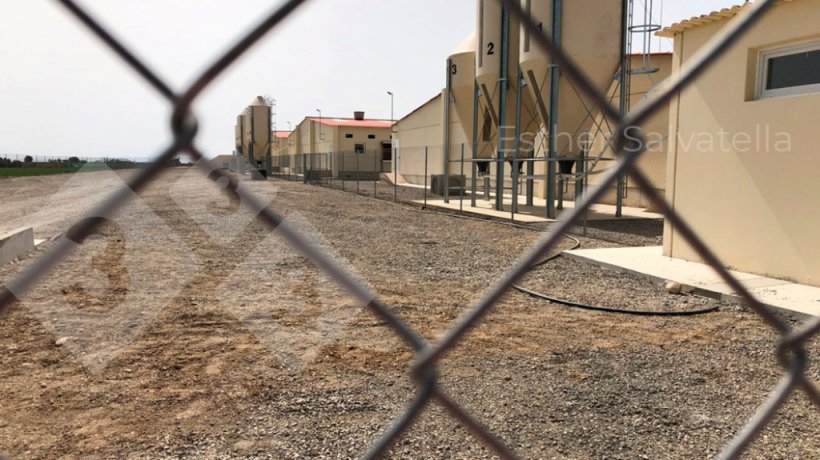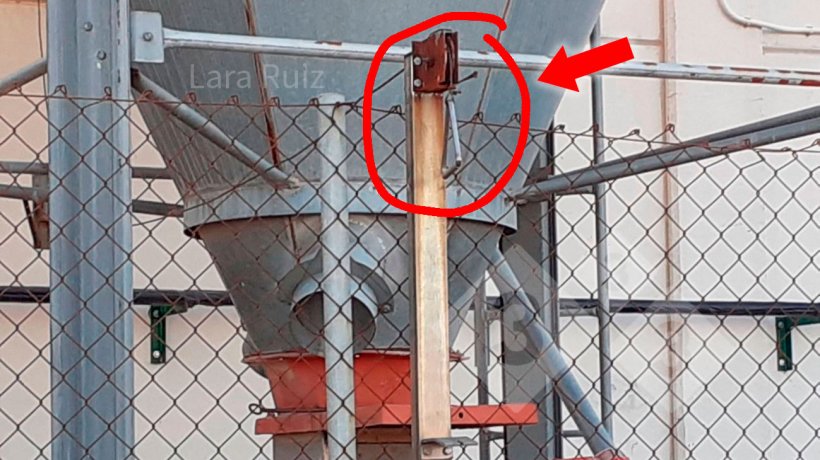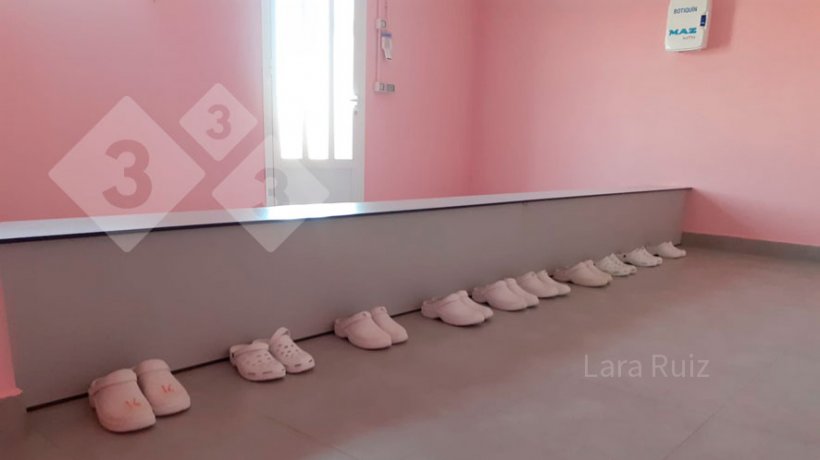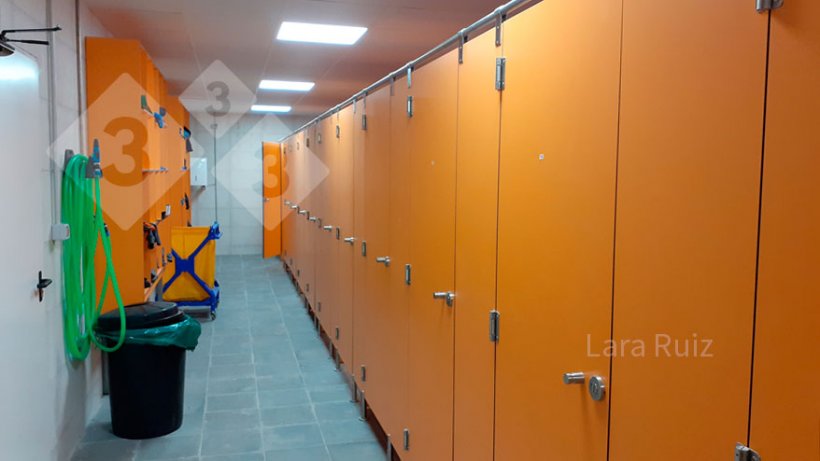When designing a new farm, or considering any expansion or renovation, there is no doubt that a lot of time goes into choosing the design and the equipment that will best suit the production requirements. In the same way, thinking of and designing a farm properly from a biosecurity standpoint is an indispensable factor in order for farms and production structures to achieve minimizing health problems.
In this article, we talk to two professionals, Lara Ruiz and José Casanovas, who are currently in charge of the design and control of biosecurity plans for the farms and production systems of the companies in which they work.

For the sake of clarity, we will focus on the biosecurity elements that should be considered in the design of a sow farm, although all these elements are applicable to any type of farm.
Casanovas begins clearly: The key to most biosecurity elements is that they unequivocally mark when one is inside the farm (clean zone) and when one is outside (dirty zone). He uses this very illustrative example: "Imagine the boundary between land and sea. If you enter the sea from a cliff, there is no doubt that at the edge of the cliff you are on land, and if you take one more step you will be in the sea. On the other hand, if you enter the sea from a beach, the passage from land to water is much more indefinite. At what point can you say that you are already at sea?" So, the exchange points on a farm (the changing room, the loading bays, etc.) must clearly define the separation between clean and dirty areas, like the cliff, without any grey areas, which is where mistakes are made.
Fencing
Both authors agree on the importance of having a double fence: the perimeter fence that surrounds the entire farm, and the biosecurity fence that delimits the clean area and the dirty area (Photo 1 and Photo 2).


Photo 2. Biosecurity fencing must allow feed bins to be opened and closed from the outside. Photo courtesy of Lara Ruiz.
Ruíz explains: An important point is that the farm should have a road as circular as possible around the perimeter. This makes it very easy to have distinct access points depending on the risk.
Ideally, there should be one access point for feed trucks and piglet loading and another separate one for worker and visitor vehicles, leading directly to the parking area. There should also be a third access exclusively for the slurry lagoon.
Casanovas points out that, although we don't want to, we always end up creating "grey" areas on farms. For example, if we move the carcass collection container as far away as possible from the farm, we will create the problem of how to get the dead animals to it, wearing what clothes/footwear?, at what time of day?, and possibly we will have to leave the clean area to get there. Furthermore, if we are talking about the carcass container in particular, legislation stipulates that the container must be on the farm premises. This is why perimeter fencing is important.
Entry of new animals and the quarantine-acclimation barn
For Ruíz, working with off-site replacements is most common. And in this case, her first choice is to do so in separate premises away from the farm, preferably on a different site. However, with this option it is necessary to take into account some determining factors that can pose a biosecurity risk. The main one being the dependence on transport from quarantine to the farm. This transportation must belong to the same farm since, if it were externally provided transportation, another quarantine would be required after the transfer. The other condition is the need for this quarantine to have adequate clothing and footwear conditions and that it be visited following biosecurity protocols.
If these two conditions are not guaranteed, it is best to place this quarentine building on the same farm as the breeding sows, but as far away as possible from the rest of the barns and, if natural ventilation is used, to place it in such a way that the prevailing winds do not blow air from the quarantine to the rest of the farm.
This quarantine must have an exclusive changing room separated from the rest of the farm, but with the same conditions: a bench separator, shower, washing machine so that the clothes do not leave the area, boot cleaner, etc.
Casanovas agrees with the conditions for the changing room; he would also prefer the quarantine to be located on a remote farm site, although he assumes that it would be dependent on a final transport which also implies a risk, but the risk can be minimized if there are guarantees and monitoring of the cleanliness of the transport. But for him, the most important thing is controlling the source of the replacements to avoid surprises.
And he points out an important idea; from a biosecurity standpoint, the best option is to do self-replacements using semen doses. In this case, you will have to have a gilt development unit on the farm to raise your future breeding sows.
The changing room
When we talk about exchange points on a farm, there is no doubt that the changing room is one of the most important.
Both authors explain how changing rooms are designed on farms today:
Before the changing room there should be an anteroom where shoes and coats are left, which should be separated from the access to the final changing room via a bench that is high enough to make it difficult to jump over it (Photo 3). This anteroom should have a sink before entering the changing room.

Photo 3. It is important that this area be large, because on big farms more than 10 people could enter here at the same time. The ideal dimensions of this bench are 60 cm wide by 40 cm high. After the bench, the staff puts on slip-on shoes that will be used in the changing room. Photo courtesy of Lara Ruiz.
After the anteroom, there is a changing room with a dirty area, a shower, and a clean area. Street clothes are left in the dirty area. Increasingly, individual type changing rooms are being used (Photo 4). The clean area of the changing room contains the farm clothes. There is also an increasing use of different colored clothing for the different areas of the farm (farrowing and gestation), as well as specific colors for visitors and maintenance workers.

Photo 4. Changing rooms with individual spaces. They provide the necessary privacy for changing without having to make separate changing rooms for men and women. Photo provided by Lara Ruiz.
After the changing room, we again find a room just like the first, with the separating bench where we will leave the slip-on shoes in the changing room area, and on the other side we find the farm boots.
We have reviewed 3 key elements in the biosecurity design of a farm. In the next article, we will address the loading bay, the entry of miscellaneous materials, and internal biosecurity.






